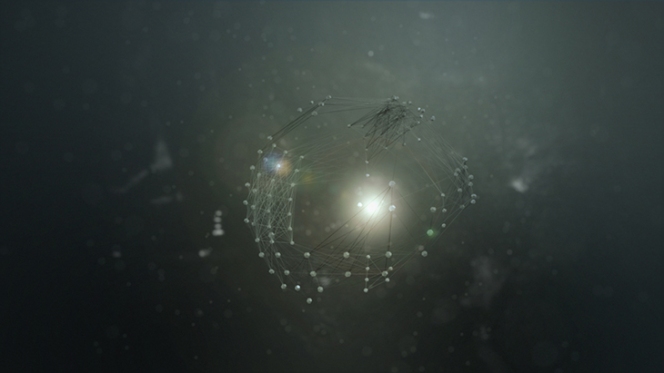Your Cart is Empty
Customer Testimonials
-
"Great customer service. The folks at Novedge were super helpful in navigating a somewhat complicated order including software upgrades and serial numbers in various stages of inactivity. They were friendly and helpful throughout the process.."
Ruben Ruckmark
"Quick & very helpful. We have been using Novedge for years and are very happy with their quick service when we need to make a purchase and excellent support resolving any issues."
Will Woodson
"Scott is the best. He reminds me about subscriptions dates, guides me in the correct direction for updates. He always responds promptly to me. He is literally the reason I continue to work with Novedge and will do so in the future."
Edward Mchugh
"Calvin Lok is “the man”. After my purchase of Sketchup 2021, he called me and provided step-by-step instructions to ease me through difficulties I was having with the setup of my new software."
Mike Borzage
The Edge: Chris Waner’s Principle Creative
April 05, 2013 8 min read
Novedge: Tell us about yourself and what you do.
Chris Waner: First, I wanted to say thank you for putting the time and energy into creating a forum for showcasing and inspiring students and professionals. I know how much work goes into that.
It wasn't so long ago that I would have said that I was a 3D visual effects artist. But over the last couple of years I've been forced to abandon that description because if I honestly assess what I do, I have to admit that the term 3D visual effects is too narrow. Nowadays I find that I'm called upon to design–design for anything and everything; design for print, web, interactive, packaging, do style frames for commercials, write copy, even compose music or do a costume design. Of course I still do visual effects; I still love visual effects, but quite honestly it has simply become another tool for enhancing a broader creative endeavor. Because I work for agencies, studios, and direct-to-client, I'm forced to view what I'm creating in light of the client's larger and more generalized brand trajectory. I call this kind of work principle creative, and quite honestly it took me a while to figure out that this is the kind of work I wanted.
//player.vimeo.com/video/35460242
Ballerina – Kauffman Center for the Performing Arts Grand Opening from claudia chagüi on Vimeo.
I've always been in the arts in some way, but somewhere along the road I decided to follow after other goals; I received a degree in English Literature and Secondary Education, taught for a while, and left because the politics of education were more than I wanted to deal with. And after a five year hiatus I came back to design. I started doing personal projects to get a small portfolio together, did some free work for people I knew, and used that work to become a junior graphic designer at a print house in Tulsa, OK. I then leveraged that work into a freelance children's book illustration job. Then took that portfolio to NYC, received my MFA in digital media, and became a visual effects artist.
Now I help people move their businesses forward in beautiful ways, and I love it.
//player.vimeo.com/video/59766113
Demo Reel – 2013 from Chris Waner on Vimeo.
Novedge: How do you find inspiration to stay ahead of the curve?
Chris Waner: As cliche' as it might sound, inspiration is everywhere. I was inspired by a kiwi fruit at lunch today; I had some fun looking at a shadow on the wall that resembled Kermit the Frog. On a more pragmatic level I've always considered staying up-to-date in design, color, technology, and cultural trends a part of my job. I unapologetically spend at least an hour a day looking at others' work, new technology, industry news, design blogs, etc. Ultimately, I'd have to say that what inspires me to stay ahead of the curve is the desire to create great work more efficiently. From a technological point of view, I want tools that are fast, efficient, and flexible; from the art/design side I see the work of others as iron sharpening iron, taking unrefined edges off my own sensibility. There's an efficiency that comes with refinement.
Novedge: What is a recent project that you worked on? Feel free to talk about more than one project!
Chris Waner: Certainly one of the most interesting and unusual projects that I've done was for Stark Collective, a start-up agency in Kansas City. On the surface the project was pretty straightforward, a launch video that spoke to the agency's intellectual ideals. However, the project was novel for a couple of reasons. In the first place the typical internal brand identity for agencies is white, graphic, and minimal. Stark, whom I would find as time went on to be breakthrough in a number of areas, had chosen a look that was black, raster, and active. In the second place, and perhaps even more astonishing, Stark did not want anything even remotely didactic but, rather, something abstract, even esoteric.
//player.vimeo.com/video/59627091
Stark Collective – Launch Video (Director's Cut) from Chris Waner on Vimeo.
Unlike many launch videos where the plain communication of core values is sufficient, Stark wanted a visual piece that spoke symbolically and even emotionally to those values; and especially visually they wanted to avoid a concrete or literal exposition. This, I think, is a powerful way to work, a resonant method of communicating ideas, and a very modern, forward-thinking approach to design. As it would happen one of the reasons I was asked to work on the Stark launch video was because of a piece that I co-directed and executed with Claudia Chagui, a brilliant creative located in Chicago. The piece was for a Kansas City organization called CinemaKC, who is dedicated to providing a forum for local film makers. In that piece we told the story of an idea that grows, blooms, takes flight, and finally finds an audience in the land of CinemaKC.
//player.vimeo.com/video/21042582
CinemaKC Show Open from claudia chagüi on Vimeo.
This symbolic storytelling caught Stark's attention, and I was brought on to design and execute a piece that encapsulated their creative philosophy. I did a few style frames, and to my amazement they just said, "Okay, go crazy."
That level of trust is utterly uncharacteristic of, well, really any client I've ever had, and that this client was an agency really kind of blew my mind. The one challenge thrown into the mix was that the piece needed to be a minute and a half long, and after the boards were complete I only had a little over four weeks to create it. Thanks to Bazillion Pictures in Kansas City who provide some much needed support in production, manpower, and infrastructure, we completed on time and on budget. The response to the launch video has been great, and Stark, mostly due to its own talent and perspective, is thriving with a host of new clients, in spite of the fact that as of the writing of this, they are only a little over a month old.
Novedge: What software do you use? Why?
Chris Waner: I've found that different software applications approach the same problem from different points of view. I recommend downloading free trials of everything, and see what feels right. Adobe has really cornered the market for suite based workflow and is an industry standard. For me the folks at Alias|Wavefront just spoke my language back in 2002-2003 when I started on Maya 4.5. Maya is still my app of choice because it strikes a nice balance between a procedural and artist-driven workflow (yes, artists drive procedural processes too). In the near future I see Houdini making a real in-road in the middle range commercial market; it's procedural tools are second to none, and I can see real possibilities because it has all the pieces in place to solve one of the major hurdles in commercial work, rapid iterations–turning versions on a theme around quickly for approval. I'm hoping to dive into Houdini in the near future. Finally, I can't leave out RealFlow. Although very few of my projects start out needing fluids, I find that I often end up there; I'll be in Maya thinking, "Hmm…how should I make this effect," and I'll realize that RealFlow has a tool to get me there.
Novedge: What are the rewards and challenges of working freelance?
Chris Waner: I think anyone considering going down the freelance road should remember that freelancing is not one job but ten. As a freelancer it is challenging enough just completing projects, keeping track of hours, billing, keeping and organizing receipts, dealing with clients, etc., but people who are successful at it must also keep pounding the pavement, so to speak, looking for new work, meeting new people, making new connections, keeping up with existing clients, promoting recently released work, and many other things. I think in many ways freelancing is much more similar to running a small business than being a visual effects artist, illustrator, designer, or whatever; you are CEO, CFO, CMO, and the grunt labor in many cases.
//player.vimeo.com/video/21391733?title=0&byline=0&portrait=0
McDonald's – Apple Tree from Kompost on Vimeo.
The market makes a big difference too. The market in NY or LA is very different than it is in KC, for example. One market might let you specialize where another market might demand that you generalize. In my market in Kansas City, I will go from being an Art Director or a Creative Director, to a motion graphics artist or visual effects TD, to an interface designer or print designer within a month or two. Freelancers need to know their market in order maximize their offerings.
That might seem like a whole lot of trouble, but freelancing has it's perks too. Quite often it carries with it a lot of creative freedom. If you work from home, your commute is shorter. Many costs are reduced like transportation, food, and there are many tax benefits if you are organized and researched on how to take advantage of that. Quite often freelancing carries with it a higher money-to-time-spent-ratio than a traditional staff position. You rarely have to deal with the same difficult personalities for very long; often I can work when I want to in the day, I sometimes get to work when I want to in the week (i.e. a day off now and again), and on rare occasions I can just turn down a job that seems, well, torturous. You can't tell your boss at work that you're not going to do that job because it looks boring…unless you're wanting to become a freelancer really soon.
//player.vimeo.com/video/45705447
MLB 2012 All-Star Game Graphics from Chris Waner on Vimeo.
Novedge: What would you say to young people who want to work in the visual effects field?
Chris Waner: After graduating with an MFA from Pratt in NYC, I went on to teach courses in visual effects to undergraduate and graduate students. I have a real heart for those who are learning and a desire to help them make the jump from academia to the workforce. I say that because it's true and because I'm about to dodge this question. This industry is changing so much and so fast that it is almost impossible to answer this question without feeling that I might have led someone astray. The only comments I can really give young people starting out in this industry is to first, be self-reflective about what you want and why you want it. The design/visual effects industry needs people who are serious about their art and/or science, are willing to work hard, and are also level-headed enough to know when they are being abused. And second, I might get some emails about this one, don't feel like you have to do the NY or LA thing to have a happy and rewarding career. I started in NY, worked on some big jobs with big clients and agencies on their terms, but I left after six years because there's more to life than that. Now three years later I'm starting to work with bigger clients and agencies from NY and LA again, but this time I work my own way. Some of my favorite projects, and the best projects, were for clients that most people would call "small." There are some local business people out there with great vision and also some brave people who will follow you in your great vision for them. The world is a big place, don't settle for a small box.
See more of Cris Waner's work on his website and Vimeo channel.
Interested in Maya and RealFlow? Check them out on our website. And don't forget to connect on Twitter and Facebook.
Also in NOVEDGE Blog

Enhance Your Designs with VisualARQ 3: Effortless Geometry Extensions for Walls and Columns
April 30, 2025 8 min read
Read More
MecSoft Unveils RhinoCAM 2025 and VisualCAD/CAM 2025 with Enhanced Features
March 08, 2025 5 min read
Read MoreSubscribe
Sign up to get the latest on sales, new releases and more …










